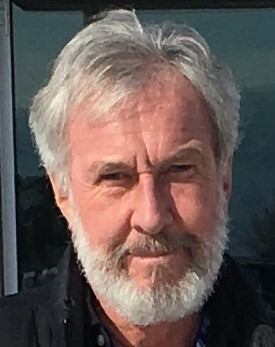
Intro to Post-Tensioned Anchors for Dams
- Registration Closed
The course will describe the evolution of Prestressed Rock Anchor technology as applied for over 50 years to dams in North America. This evolution will be presented through an analysis of the successive phases of the PTI "Recommendations" documents, which constitute the referenceable standard of care. Special attention will be paid to issues associated with long-term performance and the so called "Legacy Anchors."
Five takeaways:
1. Historical perspective.
2. Background on design.
3. Background on construction.
4. Background on stressing and testing.
5. Long-term performance evaluation.

Dr. Donald A. Bruce
President, Geosystems, L.P.
Geosystems, L.P.
Donald holds degrees in geology and geotechnical engineering from Aberdeen University, Scotland. He worked for specialty geotechnical contractor, Colcrete, Ltd., for almost 10 years in the U.K., Pakistan, Hong Kong, Egypt, and the Middle East. He then joined Pittsburgh-based Nicholson Construction Company as a technical director, working on projects throughout the U.S. and Canada. In 1996, he established Geosystems, LP, a consultancy specializing in the more practical aspects of micropiles, drilling, grouting, anchoring, diaphragm walls, and deep mixing. Dr. Bruce works throughout the world, principally as a member of boards of consultants or as litigation support.
He has published over 300 technical papers and co-authored 3 textbooks. He is an active member of many professional societies, including ASDSO, ASCE, ADSC, DFI, USSD, AEG, and ISM. Dr. Bruce received the Kapp, Baker, and Terzaghi Awards by ASCE. He was the ISM’s 2009 Lizzi Lecturer and USSD’s 2019 Legacy Lecturer.
- Anchors have been used in dams in North America since the early 1960’s. Since then, over 500 projects have been found, and details will be provided on the annual usage rates. The influence of all successive phases of the PTI Recommendations on practice will be illustrated, with special reference to corrosion protection.
- 2.1 Design: Current anchor design principles will be reviewed (note, this will not address overall system design, just individual component design.)
- 2.2 Construction: drilling, water testing, tendon preparation, and installation, and grouting will be discussed.
- 2.3 Stressing and Testing: the conduct and analysis of stressing operations will be presented, with a justification for using Performance Tests (as opposed to Proof Tests) for all dam anchors. Acceptability criteria will be reviewed.
- This is arguably the most contentious and worrisome aspect of anchor technology. Insight will be provided on the problems facing the monitoring of “legacy” anchors (i.e., those originally constructed with fully bonded free lengths, and inadequate corrosion protection.) Guidance will be provided on portfolio risk assessment programs, which are becoming more critical as anchors on many projects are now far in excess of their original design lives.
- The author has been active in rock anchor technology since 1973, as a contractor, designer, and researcher. He is the Co-Principal Investigator (with John S.Wolfhope, of Freese & Nichols Inc.) of the National Research Program on Dam Anchors, and most recently on the related CEATI research project. He has previously given many presentations on anchors at ASDSO events.

